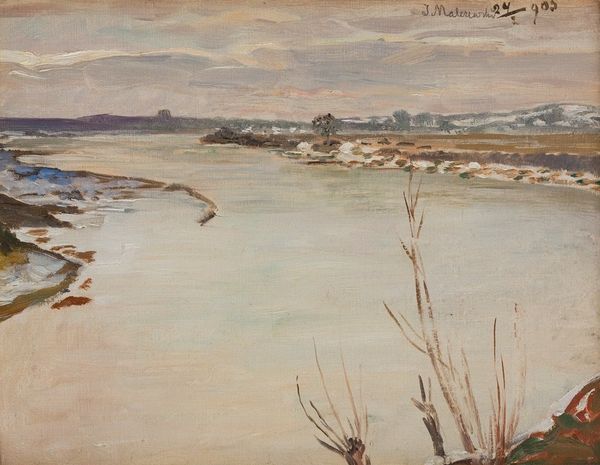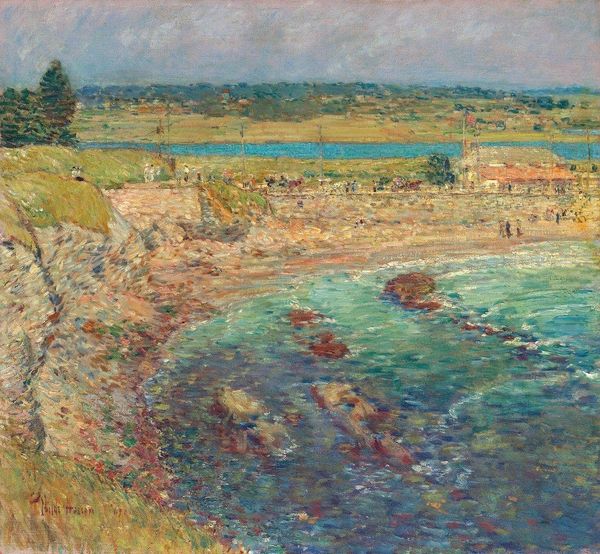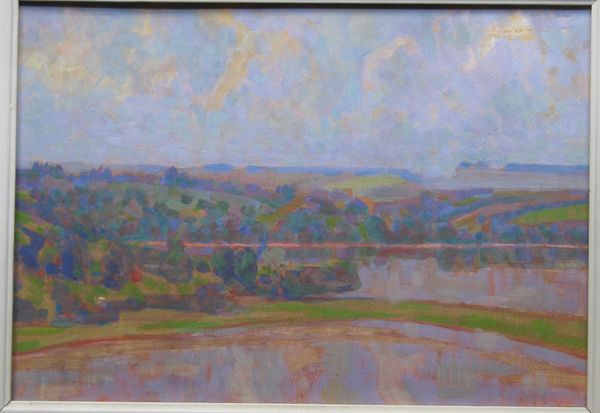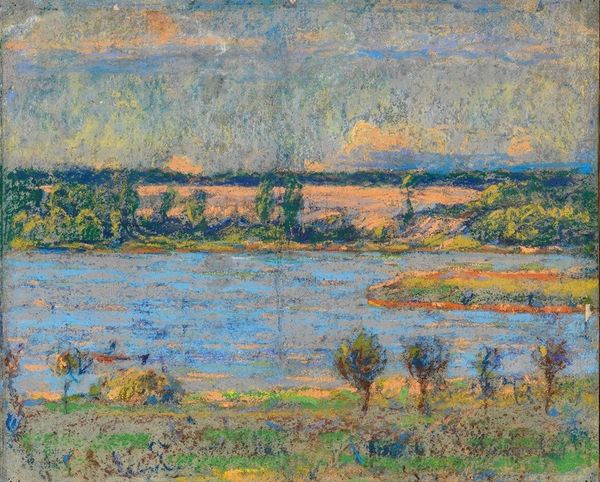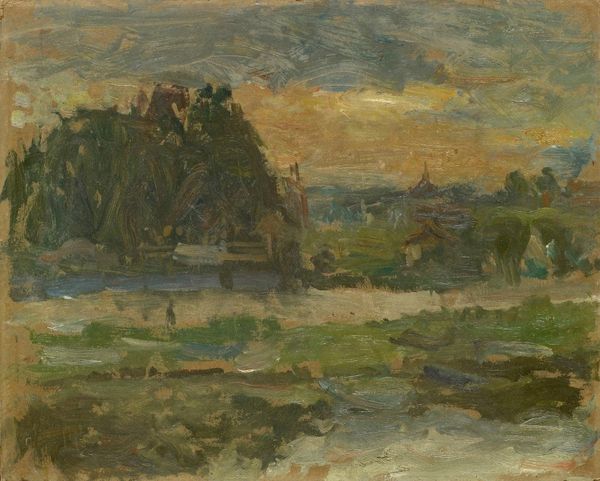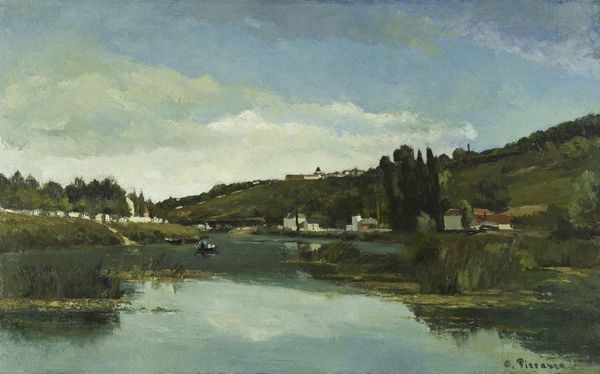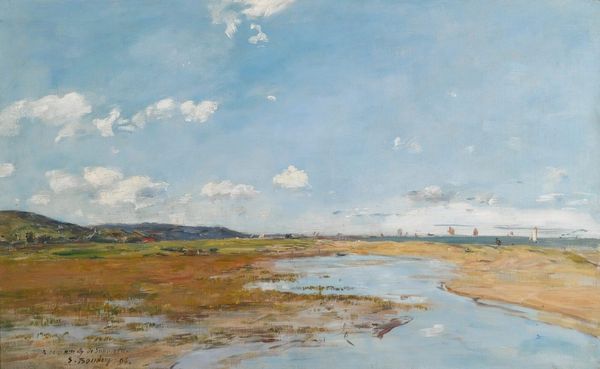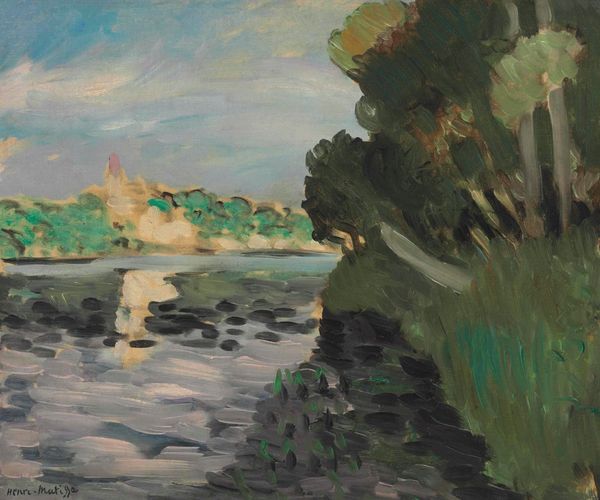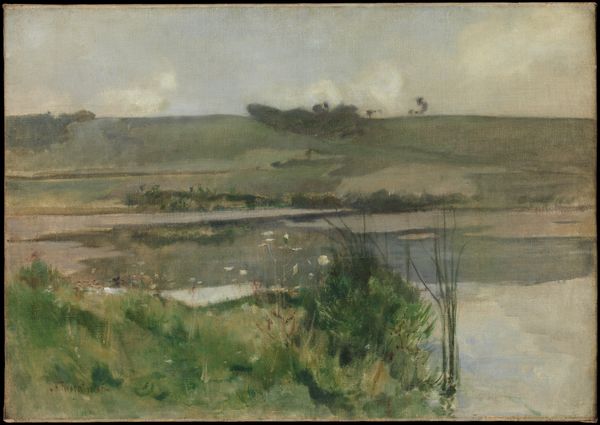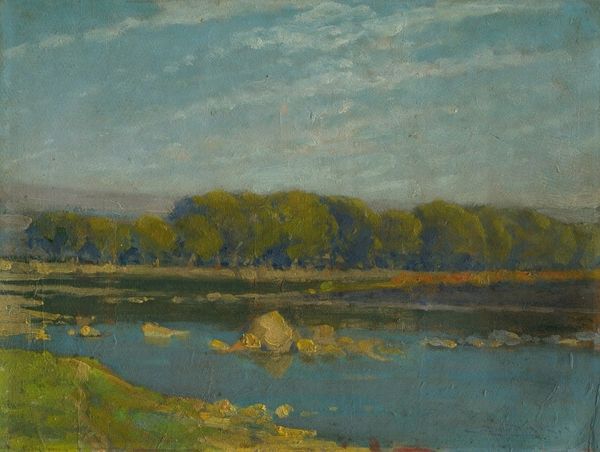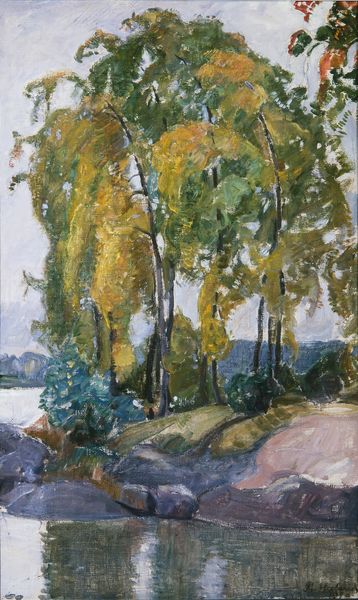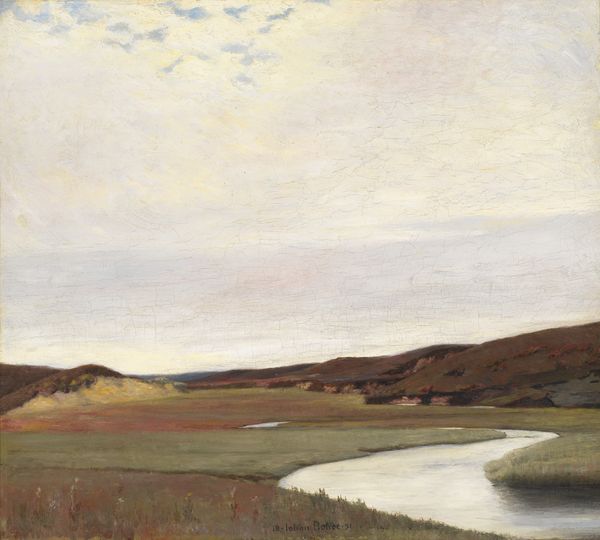
Dimensions: 25.5 x 36.5 cm
Copyright: Public domain
Curator: Ferdinand Hodler, painted "At the Jonction" around 1880. It is an oil painting on canvas depicting a landscape with a river. The scene gives me a sense of calm. Editor: Indeed, a striking horizontal composition. The tranquil blues and greens create a very serene, almost meditative quality, wouldn’t you agree? Curator: Yes, but there is more. The area was known to be the confluence of the Arve and Rhone rivers, and for the area’s industrial exploitation around that time, in connection to working class life. Hodler uses light here to illustrate classism that he had direct experience with. Editor: I notice how Hodler simplifies the landscape, reducing elements to basic forms, particularly in the rendering of the trees and the hill in the background. He favors broad, unblended strokes which enhance a certain optical flatness and decorative surface pattern. I am wondering, how does this play into the exploitation of labour? Curator: The quick painting style captures the changing effects of light, a style choice he likely employed in his larger, socially critical works. It mirrors a time where everything from the worker, to the earth under their feet was in quick motion to produce for profit. Editor: Interesting, but the subdued color palette reinforces a harmonious interplay of light and shadow. The textures created by visible brushstrokes give depth to what would otherwise be a largely flat image. Curator: Well, let's zoom out a bit. Hodler’s work often deals with themes of identity and belonging, given his background. Perhaps here, in "At the Jonction", he tries to situate himself in this landscape, examining his sense of place. The painting becomes an intimate reflection on progress, industrialization, and its impact on communities. Editor: Okay. Viewing it that way, one might observe a tension between the industrial structure atop the hill, which is also integrated formally by virtue of tone and colour, and its reflection of society's progression versus a seemingly idyllic landscape that's more about Hodler's aesthetic than its social environment. Thank you, that perspective helps integrate theory with practice for sure.
Comments
No comments
Be the first to comment and join the conversation on the ultimate creative platform.
